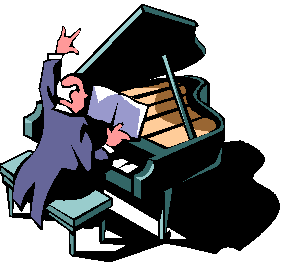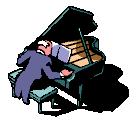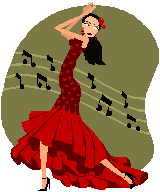 Piano notes, or notes played on a piano, are deceptively simple little things. They are the alphabet of music. All told, there's only twelve of them in a diatonic scale, a fact which makes the whole concept sound much less complicated than it really is. Even the term piano notes itself is often misused; while it's usually meant to refer to the actual pitch, the term piano notes technically only applies to the written notation of a pitch and not the actual sound. Then there are the issues of rhythms, scales, accidentals, octaves -- the whole thing can get very complicated, very fast.
Piano notes, or notes played on a piano, are deceptively simple little things. They are the alphabet of music. All told, there's only twelve of them in a diatonic scale, a fact which makes the whole concept sound much less complicated than it really is. Even the term piano notes itself is often misused; while it's usually meant to refer to the actual pitch, the term piano notes technically only applies to the written notation of a pitch and not the actual sound. Then there are the issues of rhythms, scales, accidentals, octaves -- the whole thing can get very complicated, very fast.Piano notes are named after the first seven letters of the English alphabet and keep that name regardless of the octave; on a typical 88 key piano, these notes are represented by the white keys. But since the diatonic scale has twelve notes and not seven, some of these can be altered. To get the extra five notes, we can sharpen (raise a half-step) or flatten (lower a half-step) some notes; these piano notes are the black keys. Not every note can be sharpened or flattened, however. Since C is only a half-step away from B, B cannot be sharpened and C cannot be flattened. Likewise, E is only a half-step away from F; therefore, F cannot be flattened and E cannot be sharpened (there are, of course, some exceptions to this depending on the key signature).
The rhythmic aspect of piano notes are based on their duration, creating a series of piano notes all differing in type and value. Whole piano notes are four beats and represented by a hollow oval with no stem. Half piano notes are two beats, or half of a whole, and represented by a hollow oval with a stem. Quarter piano notes represent a fourth of a whole note, eighth piano notes an eight, sixteenth notes and sixteenth and so on as far as 128th piano notes (which are rarely used). It's also important to mention that piano notes can be altered by adding a dot after the written note. Dotted piano notes indicate that the note's value is that of the original note plus one half. Dotted half piano notes, for instance, are worth three beats and dotted quarter piano notes are worth one and a half.


























